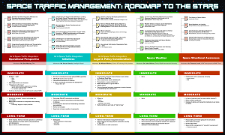Location
Henderson Welcome Center
Start Date
16-11-2016 1:30 PM
End Date
16-11-2016 5:30 PM
COinS
Nov 16th, 1:30 PM
Nov 16th, 5:30 PM
Credential Pickup & Tours
Henderson Welcome Center


Comments
Tours will begin at the Henderson Welcome Center.
Engineering Physics Propulsion Lab (EPPL) Synopsis
Engineering Physics Propulsion Lab (EPPL) at the College of Arts and Sciences was created at the COAS in 2015 by Dr. Sergey V. Drakunov (Associate Dean of Research and Professor of Engineering Physics at COAS). The aim of the lab is to facilitate research of COAS faculty on innovative methods of propulsion and related feedback control and develop new technologies for space exploration and aeronautics. The lab creation was supported by advice of specialists from Science and Technology Projects Division, Spaceport Systems Branch (UB-R1) NASA, Kennedy Space Center. The lab layout and design was developed with help of industrial sponsor Louisiana Steam Equipment Company Inc. that donated all materials and labor to build the test cell, high pressure manifold and lab furniture as well as funds to support research on innovative methods of propulsion.
Currently the focus of the lab is on cold gas propulsion for NASA supported Martian and Asteroid Free Flyer project and the new Steam Propulsion project also supported by NASA. The lab also plans to be engaged in development other methods of propulsion based on advanced physics such as magnetic propulsion, electrical propulsion and plasma propulsion using advantage of having plasma chamber with possibility of creating deep vacuum at the College of Arts and Sciences. All these projects are not only based on advanced physics but also on innovative methods of nonlinear feedback control. The Lab is already in collaboration with faculty and students at the College of Engineering and there are plans to extend this collaboration to have more joint projects using advantages of advanced physical and mathematical expertise at the COAS and design/development of prototypes and system integration expertise at the COE. At this time (October 2016) there are two spacecraft prototypes brought from KSC that are located at the EEPL that the ERAU students and faculty are working on.
The EPPL is committed to maintaining high level standards of safety as well ITAR and similar other government restrictions on technology transfer.
Spaceflight Simulator System
http://daytonabeach.erau.edu/about/labs/suborbital-operations-science/index.html
The Applied Aviation Sciences Department operates a Suborbital Space Flight Simulation and Mission Control Center, which together comprise the Suborbital Operations Science Lab, located in Room 355 of Building 6 at the Daytona Beach Campus. The lab simulates a space vehicle and associated control center to simulate takeoffs and landings from conventional runways and flights up to 350,000 feet. The simulator consists of aviation control and display hardware, head’s-up-display, modified X-Plane software, and compressed air for pressure suits. The simulator’s baseline profile is a rocket-propelled ascent followed by a glide descent to the departure airfield; however, the system can easily be configured to simulate point-to-point flights. The simulator records 56 flight data parameters, such as angle of attack and acceleration forces, that are available for analyses.
Potential research topics include astronaut spatial and temporal perception and attentional allocation, biometric analyses, energy-limited traffic avoidance maneuvers, in-flight emergencies, knowledge sharing, distributed supervisory control, fatigue effects on communication, mission control operations and communications, pressure suit ergonomics, propellant management for contingencies and diversions, safety processes and procedures, and suborbital flight energy management.
NextGen Testbed
http://nextgen.erau.edu/
Established in 2011, the Next Generation Air Transportation System, or NextGen, is a Federal Aviation Administratin (FAA) initiative to modernize the nation’s antiquated air traffic control systems to make air travel safer, more efficient, and more economical.
The FAA has contracted Embry-Riddle Aeronautical University (ERAU) to operate the Florida test bed facility, which is located next to Daytona Beach FL International Airport.
To ensure that future air travel becomes safer and more efficient, and to ease economic and environmental concerns, the government signed a law in December 2003 that endorsed a Next Generation Transportation System.
NextGen integrates existing technologies, policies, and procedures with newly developed ones to achieve the goals of reducing delays, saving fuel, and lowering aircraft exhaust emissions.
Telescope
http://daytonabeach.erau.edu/about/labs/telescope/index.html
The newest addition to the new ERAU Astronomy and Astrophysics program is the 1-meter (1-m) Ritchey-Chrétien reflecting telescope. The new telescope, housed in the new College of Arts & Sciences building, is the largest university-based research telescope in Florida, weighing in at around 2 tons.
The Ritchey-Chrétien telescope (RC) is a type of reflecting telescope that delivers a large-diameter, well-corrected field of view via hyperbolic primary and secondary mirrors and field-flattening lens system. Computer-controlled, this telescope uses new, high-efficiency detectors to gather millions times more light than can be seen by the human eye.
This telescope allows for students and faculty to research diverse possible topics, such as the study of potentially hazardous, nearby asteroids and comets; the ages and evolution of stars; the large-scale structure of galaxies; unusual compact objects such as pulsars, quasars and magnetars; and planets outside our solar system.
This new telescope is housed in a new Observatory in the COAS building, along with a solar telescope and six smaller portable telescopes mounted on a terrace outside the observatory dome.